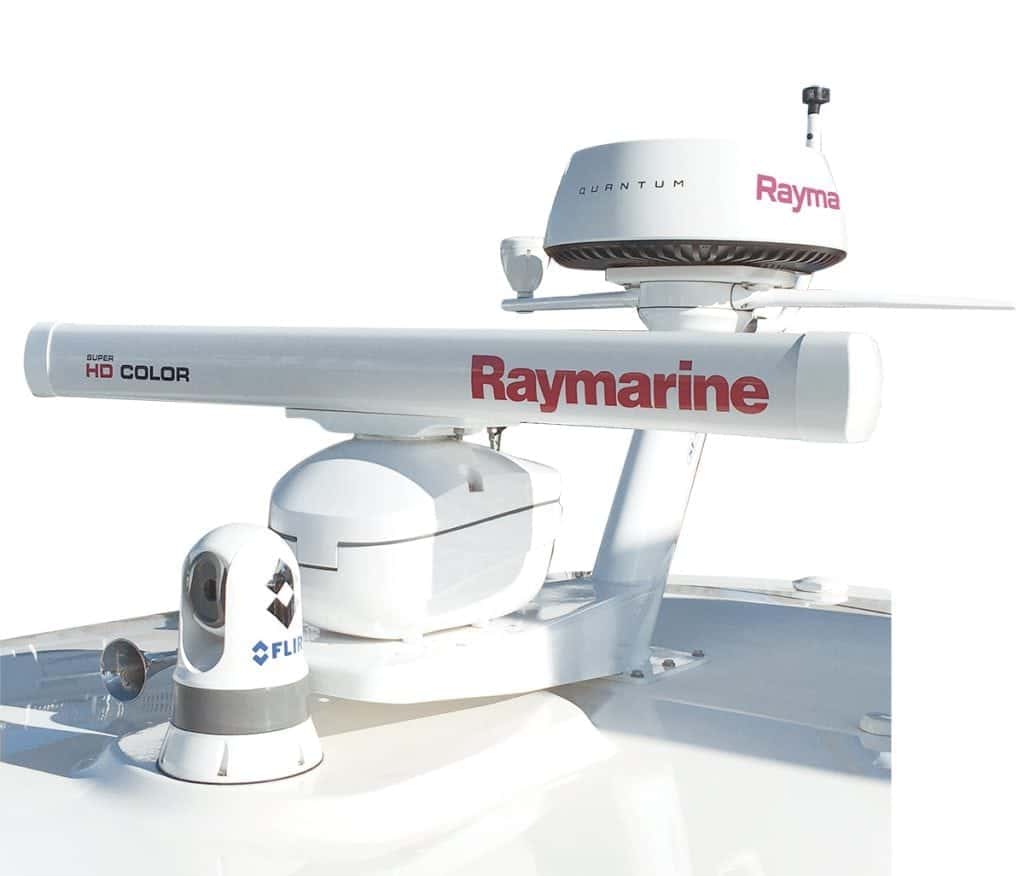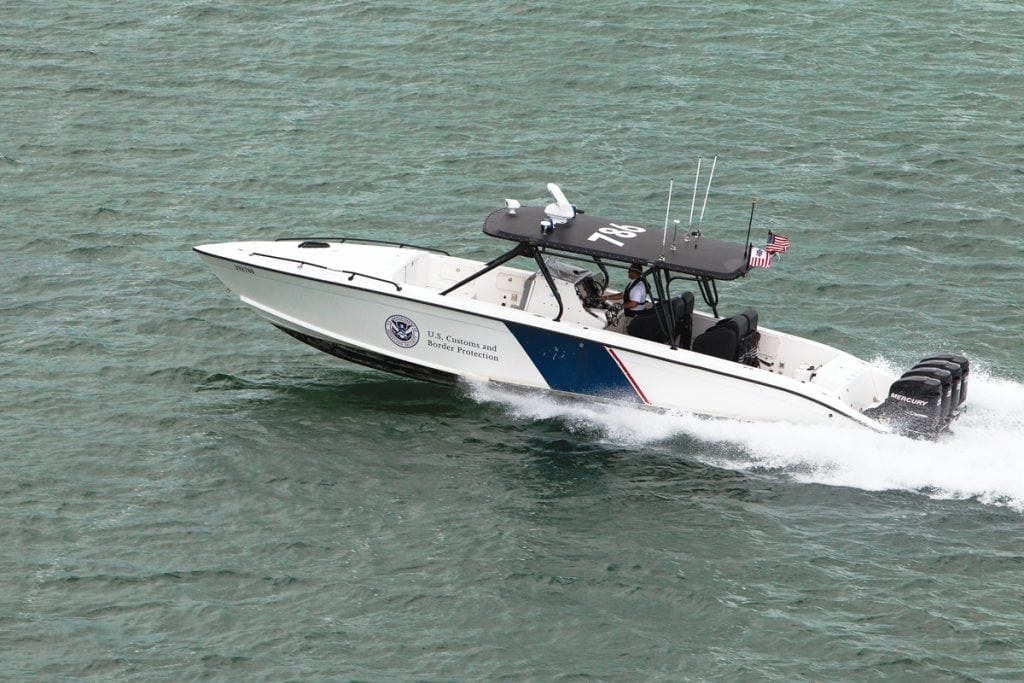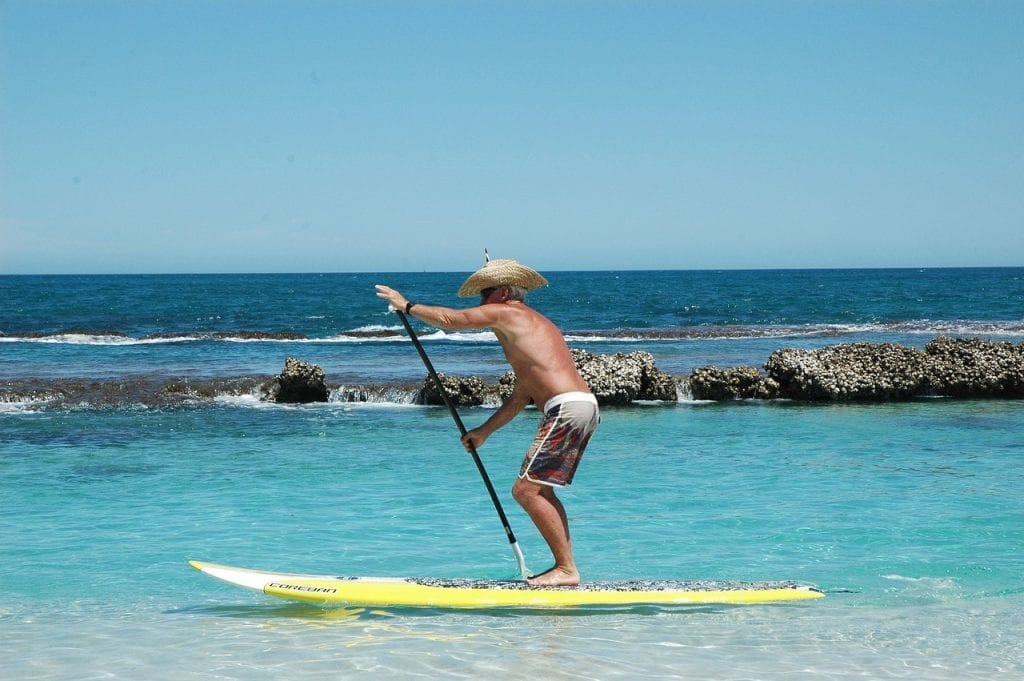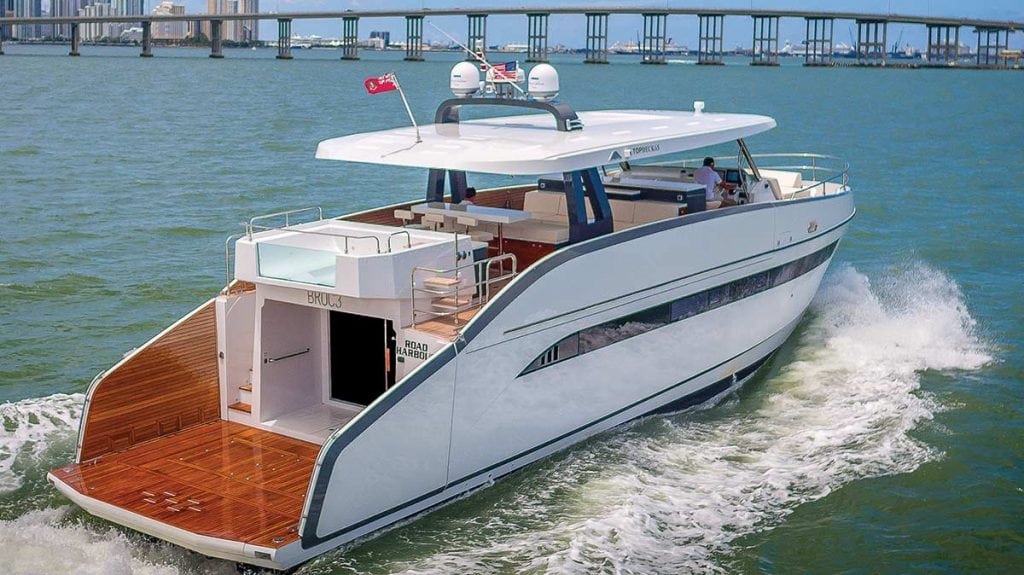For cruisers, this radar is more than just a convenience. There are other uses for radar that can be lifesavers.
Think of radar as a sonar fish-finder, except the transducer/antenna is spinning inside the radome—that round covering on top of your boat. By transmitting thousands of harmless microwave pulses per second, the radar determines what objects are around you and
references their position to your bow.
Invented in the early 20th century, radar is now a common accessory on boats and costs have come down. However, there are many other uses for radar that are underutilized, as many owners don’t know how to get the full value of their units aside from the safety aspect. “Most boat owners today use their radar systems as a tool for collision avoidance,” says Jim McGowan, Americas marketing manager of FLIR Maritime and Raymarine. “Typically, that means nighttime, in the rain or in the fog. If you’re out after dark or in the fog, it’s very comforting to know that you have the radar on board if you need it in those circumstances.”
Other popular uses for radar include finding seabirds that feed on small bait fish. This is a specialized usage of the technology, but many anglers find success with it. By locating
the birds at long range, it gets them on the fish sooner with less fuel burn.
“My favorite radar feature that most boat owners don’t use is the radar offset feature,” McGowan says. “This allows you to pull the center of the radar sweep, where your boat is, either one-third or two-thirds of the diameter of the screen downwards. The benefit is it gives you more lookahead visibility without having to change the radar’s range scale or making the target display smaller.” Radar offset is important because most of the time you’re going to be moving ahead at speed. It’s convenient to be able to see farther ahead on the radar scope, sacrificing some range to the rear.
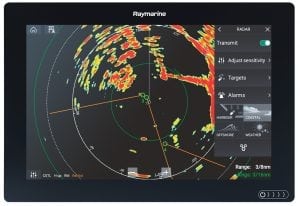
Some other uses for radar include keeping tabs on what’s in your way is enhanced with MARPA (mini automatic radar plotting aid) and ARPA (automatic radar plotting aid). There are collision avoidance tools built into the radar system that enable it to track targets on the scope, calculate their course and speed and advise you of potential collisions. MARPA-equipped radars require you to manually select a target and enter it into tracking mode. ARPA-equipped radars can automatically acquire new targets that enter safety or guard zones you specify.
“Regardless of how the target is acquired, once the radar has it in track, it will determine its course and speed and display it on the scope,” explains McGowan. “Targets that
are going to pass inside of your pre-defined safety circle will be highlighted with flashing symbology and an audible alarm. It’s a great feature to use in crowded waters or if
you’re out in open water and want to keep watch of distant vessels on the horizon.”
One of the biggest improvements to radar in recent times is the addition of Digital Signal Processing (DSP). Older generations of radars used analog filters to clean up unwanted
noise and clutter. They worked okay but needed lots of manual tuning and tweaking as conditions changed. DSP radars use a computer and custom software to analyze the signals. “The radar is now intelligent and knows what rain looks like, what boats look like, what birds look like, etc.,” says McGowan. “We can teach the radar to show the things we want to see and hide the clutter, all without manual tuning and tweaking.”
McGowan highlights the importance of wireless technology. “Raymarine’s latest generation Quantum radars have Wi-Fi connectivity to link them to the boat’s multifunction displays. This eliminates the heavy and expensive inter-unit data cable while maintaining a link that is reliable and secure. Installation is simplified, and the overall cost of the system is reduced, which is a win for boat owners.” Raymarine has added several new features and technologies to its radar line in the last year. Its newest innovation is the Quantum 2 CHIRP radar complete with more uses for radar, like Doppler Target Tracking. Doppler radar makes it even easier to interpret the radar display and determine at a glance which targets are headed toward you and which are moving away. Doppler radar can specifically determine which targets are moving and which are stationary, and then color-code them for easy identification. Red targets, for example, are ones to watch as they are closing in range.
Another addition to many Raymarine systems is ARPA radar tracking. Raymarine has offered MARPA on all its radar systems for many years; offering ARPA brings its radar platform to an even higher level, automating the target acquisition and tracking process. You can draw up to two safety zones on the radar scope. They can be a simple radius
or a sector of the scope. Any radar targets that enter that zone will automatically acquire and track it with no manual intervention required.
Radar technology is a great tool for collision avoidance, coastal navigation, bird detection, and much more—but practice is essential. “One thing I always encourage customers to do is to use their radar on bright, sunny days,” says McGowan. “Don’t wait until it’s dark or the weather turns bad. That is exactly the time when you want to be able to use the tool with confidence. By using radar on nice days, you’ll learn how it works, how it reacts, and you’ll be able to compare radar contacts to visible contacts you can see with your eye. Use these opportunities to practice with the ARPA and MARPA. Try changing modes,
adjusting settings, and see what happens.” You know what they say: Practice makes perfect. When it comes to radar, practice makes you confident.
By Don Minikus, Southern Boating
March 2018

